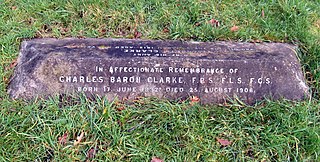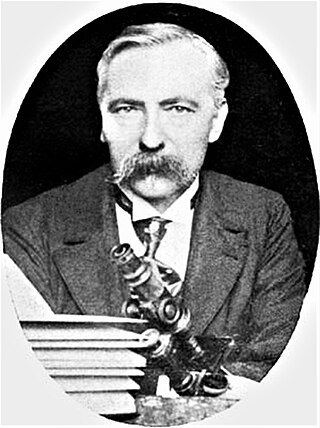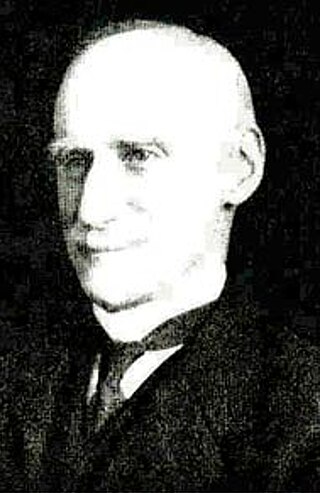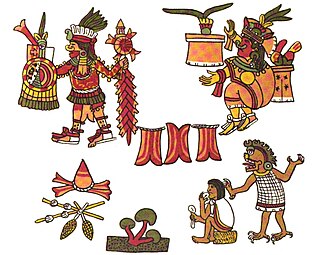Related Research Articles

Mycology is the branch of biology concerned with the study of fungi, including their genetic and biochemical properties, their taxonomy and their use to humans, including as a source for tinder, traditional medicine, food, and entheogens, as well as their dangers, such as toxicity or infection.

Amanita muscaria, commonly known as the fly agaric or fly amanita, is a basidiomycete of the genus Amanita. It is also a muscimol mushroom. Native throughout the temperate and boreal regions of the Northern Hemisphere, Amanita muscaria has been unintentionally introduced to many countries in the Southern Hemisphere, generally as a symbiont with pine and birch plantations, and is now a true cosmopolitan species. It associates with various deciduous and coniferous trees.

A fairy ring, also known as fairy circle, elf circle, elf ring or pixie ring, is a naturally occurring ring or arc of mushrooms. They are found mainly in forested areas, but also appear in grasslands or rangelands. Fairy rings are detectable by sporocarps in rings or arcs, as well as by a necrotic zone, or a ring of dark green grass. Fungus mycelium is present in the ring or arc underneath. The rings may grow to over 10 metres (33 ft) in diameter, and they become stable over time as the fungus grows and seeks food underground.

Looking Backward: 2000–1887 is a utopian science fiction novel by Edward Bellamy, a journalist and writer from Chicopee Falls, Massachusetts; it was first published in 1888.

Sir Walter Besant was an English novelist and historian. William Henry Besant was his brother, and another brother, Frank, was the husband of Annie Besant.
Anne Manning was an English novelist. Born in London, she was an active writer, having 51 works to her credit. Though her writings were antiquated in style, they were considered to have some literary charm and a delicate historical imagination. Her best known novel features the young wife of the poet John Milton.

Ellen Price was an English novelist better known as Mrs. Henry Wood. She is best remembered for her 1861 novel East Lynne. Many of her books sold well internationally and were widely read in the United States. In her time, she surpassed Charles Dickens in fame in Australia.

Miles Joseph Berkeley was an English cryptogamist and clergyman, and one of the founders of the science of plant pathology. The standard author abbreviation Berk. is used to indicate this person as the author when citing a botanical name.

Mary Louisa Molesworth, néeStewart was an English writer of children's stories who wrote for children under the name of Mrs Molesworth. Her first novels, for adult readers, Lover and Husband (1869) to Cicely (1874), appeared under the pseudonym of Ennis Graham. Her name occasionally appears in print as M. L. S. Molesworth.

Charles McIlvaine (1840–1909) was a veteran of the American Civil War who retired to become an author and mycologist.

Mordecai Cubitt Cooke was an English botanist and mycologist who was, at various points, a London schoolteacher, a Kew mycologist, curator at the India Museum, journalist and author,. Cooke was the elder brother of the art-education reformer Ebenezer Cooke (1837–1913) and father of the book illustrator and watercolour painter William Cubitt Cooke (1866–1951).

Charles Baron Clarke was a British botanist. He was born at Andover, the eldest son of Turner Poulter Clarke. He was educated at King's College School, London, and at Trinity and Queens' Colleges, Cambridge. He began the study of law at Lincoln's Inn in 1856 and was called to the bar in 1860. He lectured in mathematics at Presidency College, Calcutta, from 1857 to 1865. Clarke was Inspector of Schools in Eastern Bengal and later of India, and superintendent of the Calcutta Botanical Garden from 1869 to 1871.
Emily Sarah Holt (1836–1893) was an English novelist. She was born at Stubbylee, Bacup, in Lancashire, 25 April 1836. She was the eldest daughter of John Holt whose wife Judith was the 3rd daughter of James Mason of Greens. It is said she was educated at Oxford. In late 1893 when at Harrogate, she became ill and went to her brother in Balham (London), where she died on Christmas Day.

Three Hundred Years Hence is a utopian science fiction novel by author Mary Griffith, published in 1836. It is the first known utopian novel written by an American woman. The novel was originally published in 1836 as part of Griffith's collection, Camperdown, or News from Our Neighborhood, and later published by Prime Press in 1950 in an edition of 300 copies.

Narcisse Théophile Patouillard was a French pharmacist and mycologist.

Curtis Gates Lloyd was an American mycologist known for both his research on the gasteroid and polypore fungi, as well as his controversial views on naming conventions in taxonomy. He had a herbarium with about 60,000 fungal specimens, and described over a thousand new species of fungi. Along with his two brothers John Uri Lloyd and Nelson Ashley Lloyd, he founded the Lloyd Library and Museum in Cincinnati.
Andrew Price Morgan was an American debater. He investigated the flora of the Miami Valley in Ohio. While his interest included flowering plants, as noted by his Flora of the Miami Valley, Ohio, his special interest was in fungi. Morgan worked as a teacher in Dayton. He studied the botany of the Great Miami River, publishing in 1878 the Flora of the Miami River, Ohio; Morgan also showed particular interest in mycology and bryology. A.P. Morgan was a mentor to the prominent American mycologist Curtis Gates Lloyd. His correspondence with Lloyd is stored in the Lloyd Library and Museum in Cincinnati. Lloyds portion of the correspondence is stored in the Ada Hayden Herbarium at Iowa state university. Morgans collection of preserved fungi can also be found at the Ada Hayden Herbarium along with Laura Morgans gouache illustrations of fungi that could not be preserved.

William Bywater Grove, was an English biologist, in particular a botanist and microbiologist. He is remembered in particular as a mycologist. He died in 1938 on the sixth of January when he was 89.

Lydia Hoyt Farmer was a 19th-century American author and women's rights activist. For many years, Farmer contributed to the leading newspapers and magazines, on various lines: poems, essays, juvenile stories, historical sketches and novels. She was of a deeply religious nature, and endeavored to tinge all her writings with a moral as well as an amusing sentiment. She edited What America Owes to Women, for the Woman's Department of the World's Columbian Exposition. Her works included: Aunt Belindy's Point of View; The Doom of the Holy City; A Story Book of Science; A Knight of Faith; Short History of the French Revolution; Girls' Book of Famous Queens; What America Owes to Women; and others. Farmer died in 1903.

Fungi have had an enormous influence in the arts for centuries, being used as inspiration or subject matter, with artists using fungal materials as working matter since more recent times. Presence of fungi in the arts abound from across the globe and among different cultures since at least 1500 BCE. The use or inspiration of fungi in the arts is extremely various and prolific due to the highly different morphologies, forms, effects, properties, ecologies, biogeography (distribution), and lifestyles of fungi. Fungi can be multicellular or single-celled, and are an incredibly diverse kingdom of life belonging to the eukaryotes. Traditionally, mushrooms have been the predominant form of fungi in the arts, with other fungal forms being neglected or ignored. Virtually all areas of the arts have been infiltrated by fungi. These areas include literature and fiction, paintings and the graphic arts, and since more recent times contemporary art, music, photography, comic books, sculptures, video games, dance, cuisine, architecture, fashion, and design. Contemporary artists experimenting with fungi often work within the realm of the BioArts.
References
- ↑ Bassett, Troy J. (2015). "William Delisle Hay". At the Circulating Library: A Database of Victorian Fiction 1837–1901. Retrieved 20 March 2015.
- 1 2 Beasley, Brett (30 September 2015). "Bad Air: Pollution, Sin, and Science Fiction in William Delisle Hay’s The Doom of the Great City (1880)". The Public Domain Review. 5 (18).
- ↑ Hay, William Delisle (1887). An Elementary Text-Book of British Fungi. London, S. Sonnenschein, Lowrey. pp. 6–7.
- ↑ Arora, David (1986). Mushrooms Demystified, A Comprehensive Guide to the Fleshy Fungi . Ten Speed Press. pp. 1–3. ISBN 978-0-89815-169-5.
- ↑ Hunter, Jessica. "The Mushroom Hunt". Synergy Magazine. Retrieved 2 January 2012.
- ↑ Brian Gibson,The New Man of the House: Suburban Masculinities in British Literature, 1880-1914 (2022), pp. 43-45.
- ↑ Christine L. Corton,London Fog: The Biography (2015), p.93.
- ↑ Bleiler, E. F. (1990). Science-fiction, the early years. Kent, Ohio: Kent State University Press. pp. 355–356. ISBN 9780873384162.
- ↑ Journal of the Society of Arts, 5 January 1883, Internet Archive
- ↑ International Plant Names Index. W.D.Hay.